ALREADY A PAID SUBSCRIBER? SIGN IN
ALREADY A PAID SUBSCRIBER? SIGN IN
ALREADY A PAID SUBSCRIBER? SIGN IN
When we arrived here, we took back some of the field to make a trial garden. It was workmanlike in its layout, with dirt paths between manageably sized beds and functioned as a test ground to see what the conditions here were capable of. We grew a range of perennials to see what would feel right and do well on our south-facing slopes as well as vegetables and flowers for cutting for immediate rewards in that first exciting growing season.
The annuals were the immediate litmus, rearing out of virgin ground where they were bathed in sunshine. The response was immediate and immediately rewarding, the cabbages bulking up to a couple of feet across and letting us know exactly why this had once been a market garden and that, yes, it was right to turn field back to garden. For fun, and as a celebration of this new space, we planted a bed of five or six types of sunflower. They grew like you remember things growing as a child, the seedlings popping through the newly turned dirt and not looking back as they raced skyward. I hadn’t seen growth like it and before long they were standing literally twice as tall as me and rejoicing as we were in this wonderful new ground.
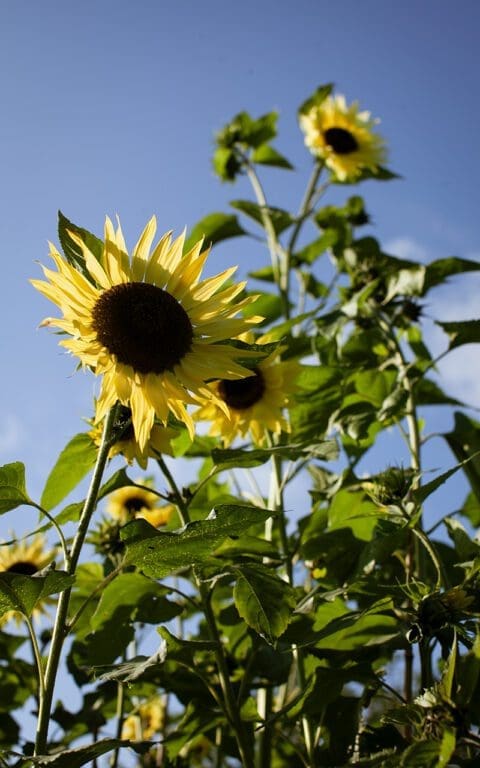
We picked them by the bucket and took vigorous bunches back to the studio in London to tide us over during the week and stop us pining for the hillside. They kept us going through July and were at their peak in August, reminding me by the end of the month of that back to school feeling. The time of the year when the summer is nearly done, but still caught in their energy.
In September we let them form seed and those that didn’t get ravaged by an October storm stood blackened by frost, the seed cases scattered at their feet where the birds had feasted. Seedlings returned in the garden and I left them where I could work around them in the following years, but when we developed the kitchen garden to the east of the house and then the perennial garden to the west, they temporarily lost their home.
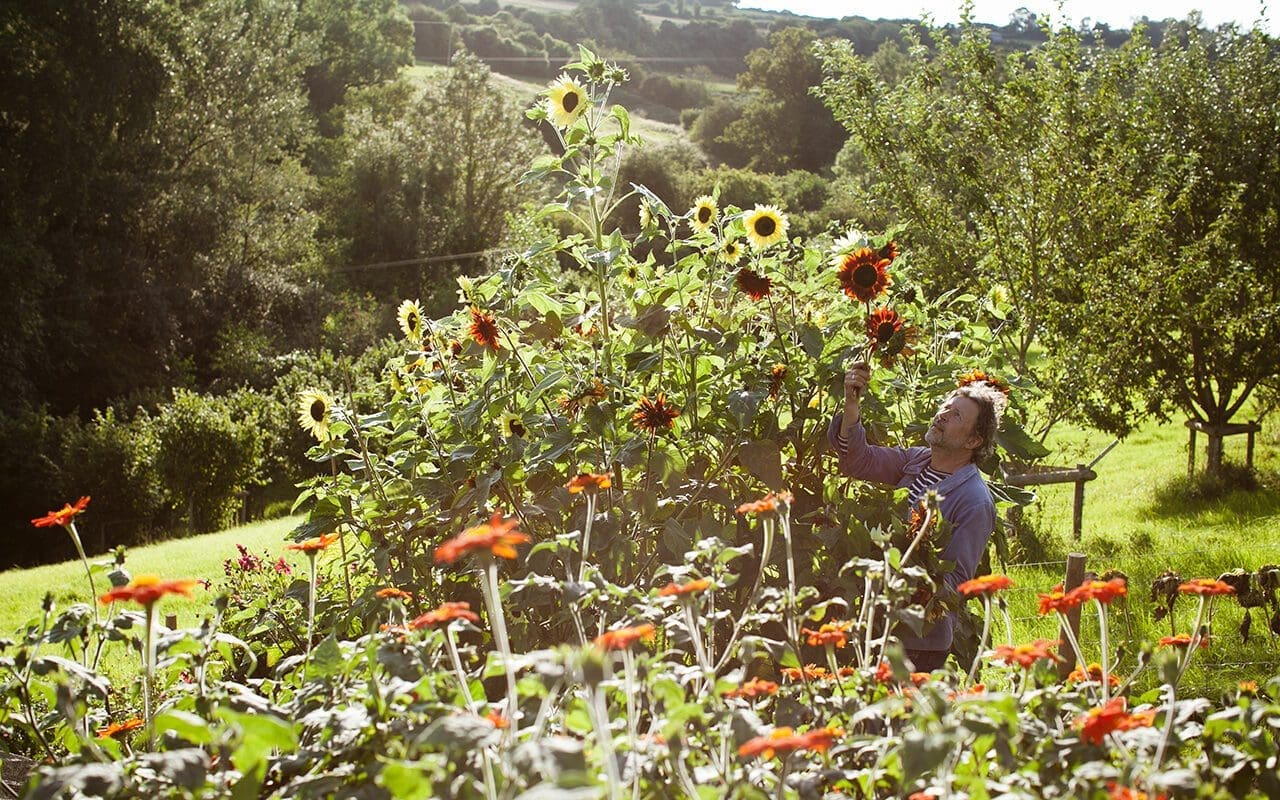
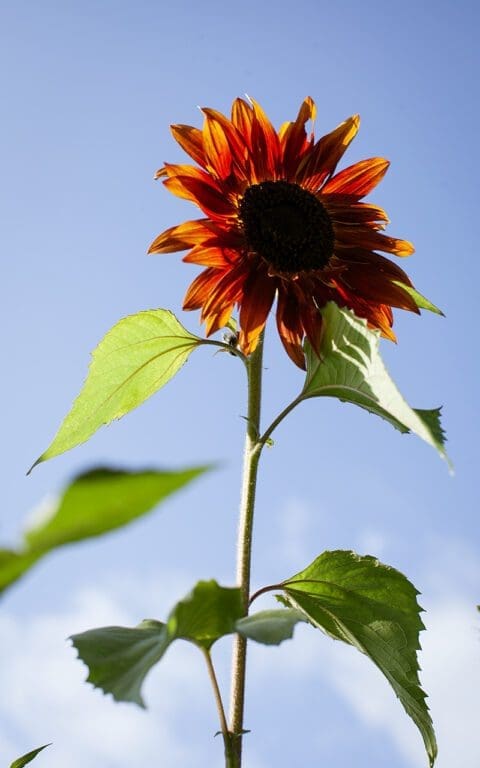
Last year’s response to the pandemic saw us putting up a polytunnel so that we could extend our season of growing to eat. This year I extended a new growing area around it to make an area for continued trials and a spill over for vegetables that need more space. Potatoes were planted to ‘clean’ the ground in this first year of transition from pasture and to repeat the experiments from our first years here we planted a new bed of dahlias, annuals for cutting and sunflowers. It has been so very good to have them back and in generous amount, once again letting us know that, yes, this is a good place for growing.
We have three varieties of Helianthus annuus that have done splendidly. ‘Lemon Queen’, ‘Velvet Queen’ and ‘Chocolate Cherry’. This will be the last year though that we grow ‘Italian White’, a more demure variety that has proven once again to be a shadow of its cousins. Perhaps it is my own experience and I have been unlucky, but every time it germinates poorly and then limps through life. Shy is appealing sometimes, but when you have such boisterous cousins that literally throw you into shade, it makes comparison difficult.
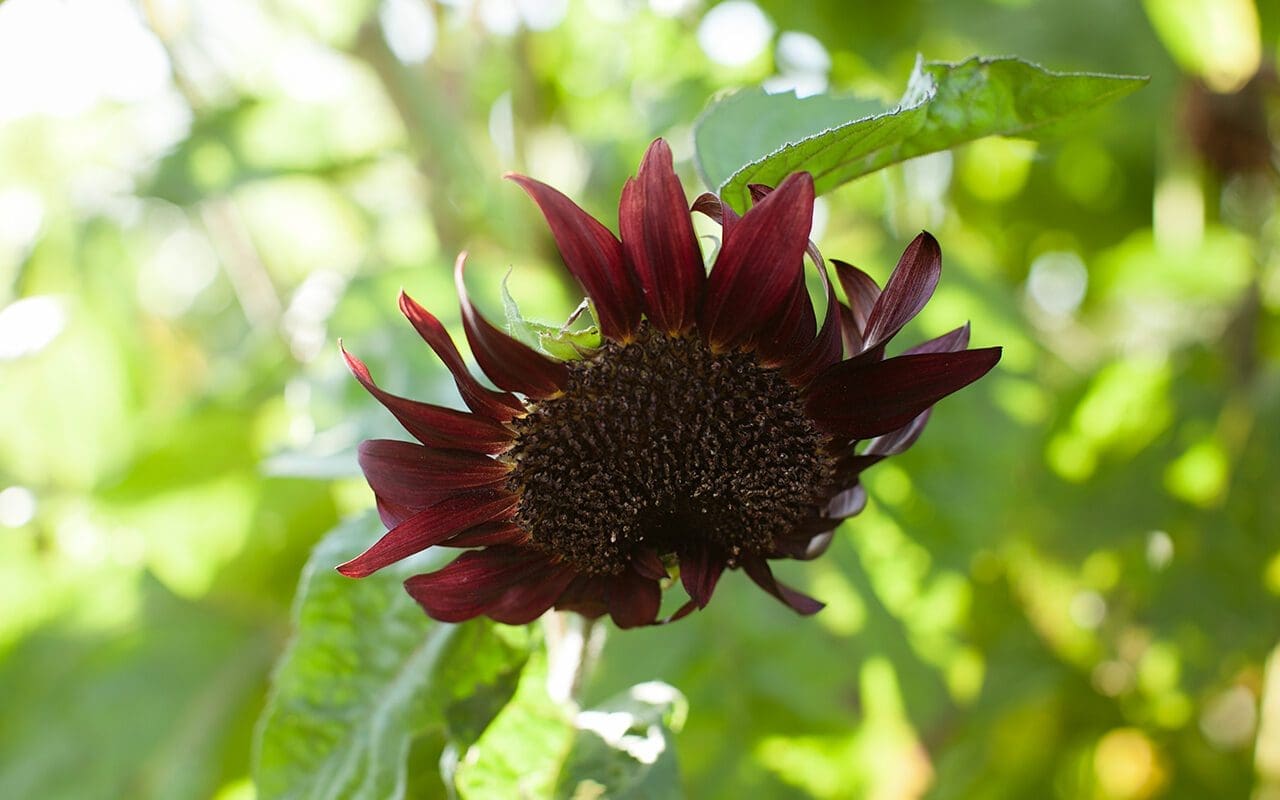
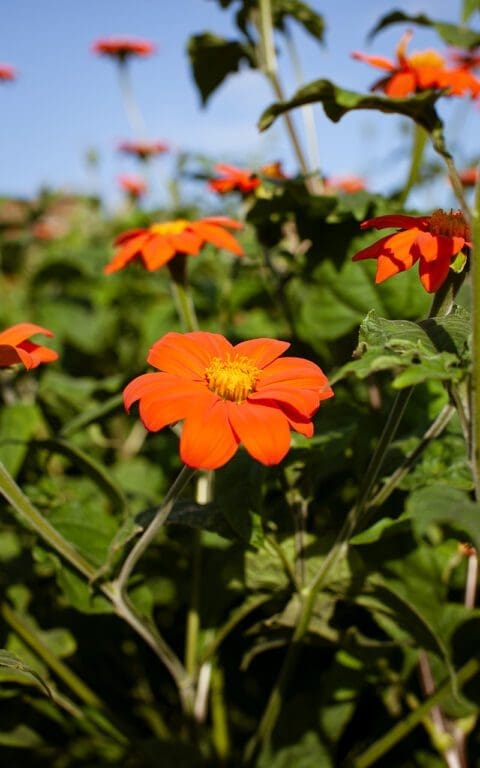
As a complement and for the saturation of pure orange, the Mexican Sunflower, Tithonia rotundifolia, has been easy and rewarding. Grown from seed sown inside and planted out after frost, we have combined it with lime green Nictotiana langsdorfii. The new ground is here to spur ideas and a few plants, the Tithonia included, have already found their way into the perennial garden to punch some late indelible colour. Annuals are good for that, taking this month as their own with no apologies and covering for anything that tends to that back to school feeling.
Words: Dan Pearson | Photographs: Huw Morgan
Published 21 August 2021
Today’s In The Garden is the result of an extremely busy week. In fact, we almost thought about not doing Dig Delve today but, having thrown myself at work this morning, I took a deep breath after lunch and it has been a pleasure to gather all of the colour in the garden and arrange it on the mantelpiece for us and you. However busy I am, as soon as I put my head in the right space for flowers, everything else falls away.
First thought is, ‘What is the story?’ Despite the glowering cloud and torrential rain, it is the colour that draws me into the garden. Then, ‘Which containers?’ ‘More colour.’ I think. So down from the shelf in the boot room comes my collection of Italian, coloured glass vases, covered in months of dust and cobwebs. The first job was to wash and dry them, before arranging them on the mantelpiece, looking at a good distribution of form and colour, while also considering a range of heights spread evenly to ensure a good rhythm. Without anything in them this can be a bit hit and miss and, once the vases are in position and filled with water, with the first stems arranged, it can be nerve-wracking or foolhardy to try and re-arrange them.
Then the selecting and cutting of flowers. This takes longer than you might think. Judging whether a plant can spare the bloom. Should I just take one, or several? Sometimes one perfect flower means sacrificing several buds still to mature. Will it stand upright in the vase? If not, how will I get it to face the way I want it to? Then, how to get them back to the house undamaged? Some flowers are far more fragile than others. The hemerocallis are a case in point with their fleshy, snappable petals. Three ‘Stafford’ were cut to get the one perfect one in the arrangement, while I had to give up on the Hemerocallis altissima every one of which was broken just getting it into the trug. There were meant to be poppies, but they shed all their petals long before I could get them into position.
I picked a few at a time, going round the garden methodically, starting down by the barns and working my way through to the end of the main garden. Each trugful contained perhaps just five flowers to prevent squashing. I placed each batch where I felt they would start to create the right composition of colour and form. By chance the softer colours came first – blues, mauves, pinks – then the yellows, followed by the strong pinks, reds, saffrons and oranges.
Stand back and evaluate. Are any flowers hidden? Is there enough space to see most or all of them clearly? Is the colour rhythm working? Does it need more yellow? More red? More height? Are the vases pleasingly spaced? These questions come as observations, not concrete thoughts, and once they have been answered it is time to take the first photographs.
Picture this. I slip off my Birkenstocks and climb onto the dining table, over which hang two pendant lamps. The one at the mantelpiece end is right where I need to be to get my framing right. So I carefully balance it on the nape of my neck and then try not to make any sudden movements, otherwise it comes swinging round to hit the front of my face and my camera, and it is made of metal and has sharp edges. Years of practice mean that this fortunately seldom happens.
Then the light needs to be right. Today has been particularly gloomy, so I had to use a low aperture setting and high ISO to get the exposure right, but this also means the images are far more prone to camera shake. I can’t use a tripod, due to the dining table and pendant lamp issues, so I brace myself, keeping my elbows close to my sides as I grip the camera and hold steady while kneeling on the hard table top. Then I just keep shooting, making tiny adjustments to the framing and hoping that one of the images will be good enough.
I check the composition in the playback screen, but it is not until I download the images that I can see whether there is a problem with the arrangement, the composition or the image. If there is, further adjustments are made and then back up on the table to take some shots.
So, that is how the image you see at the top of this page came together today. It is how all of these mantel arrangements come into being. It took the best part of the afternoon, and I enjoyed every minute, but now, it’s time for a glass of wine.
Flowers, words and photograph: Huw Morgan
Published 31 July 2021
Flowers & photograph: Huw Morgan
Published 11 April 2020
We are sorry but the page you are looking for does not exist. You could return to the homepage